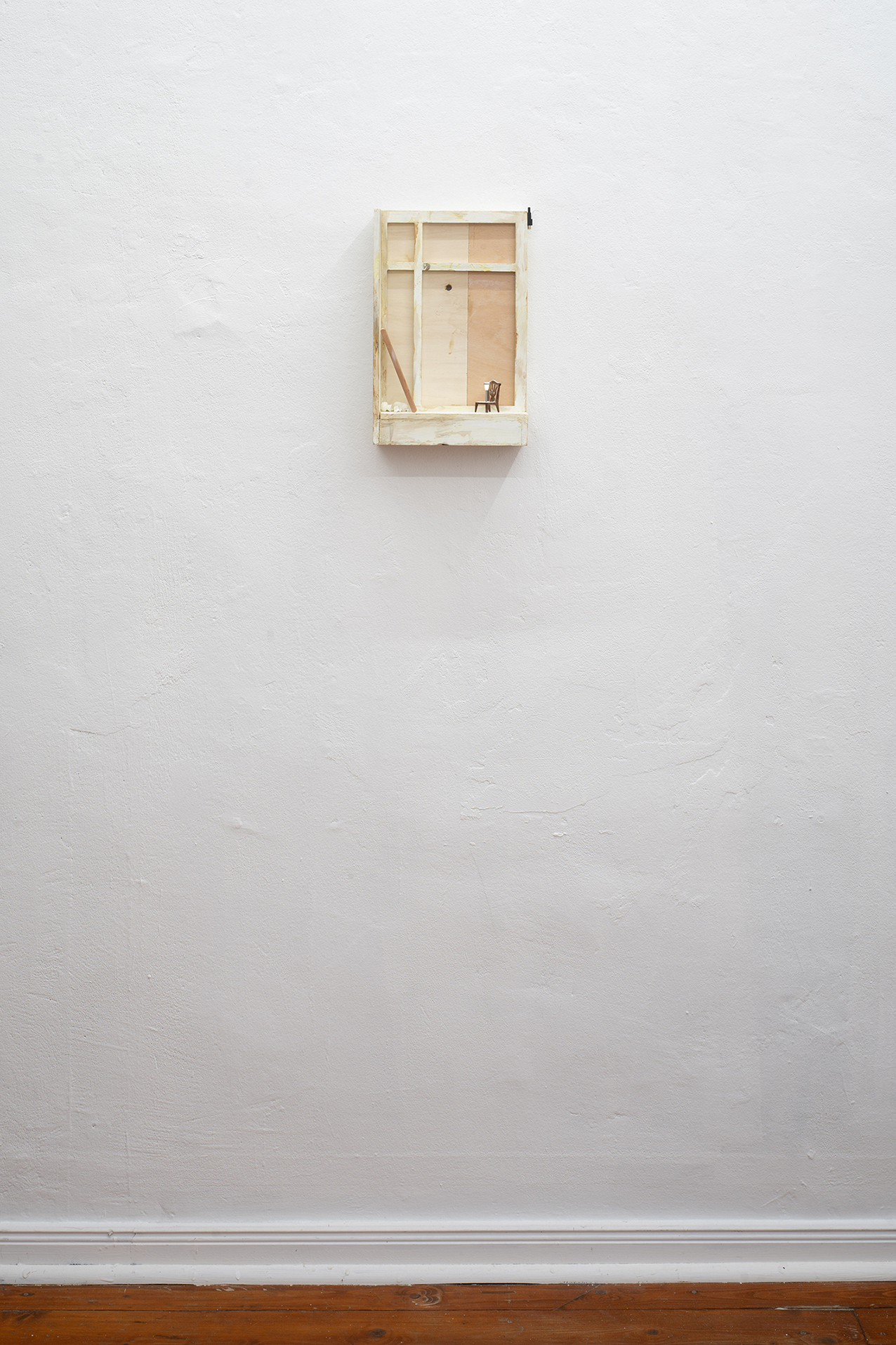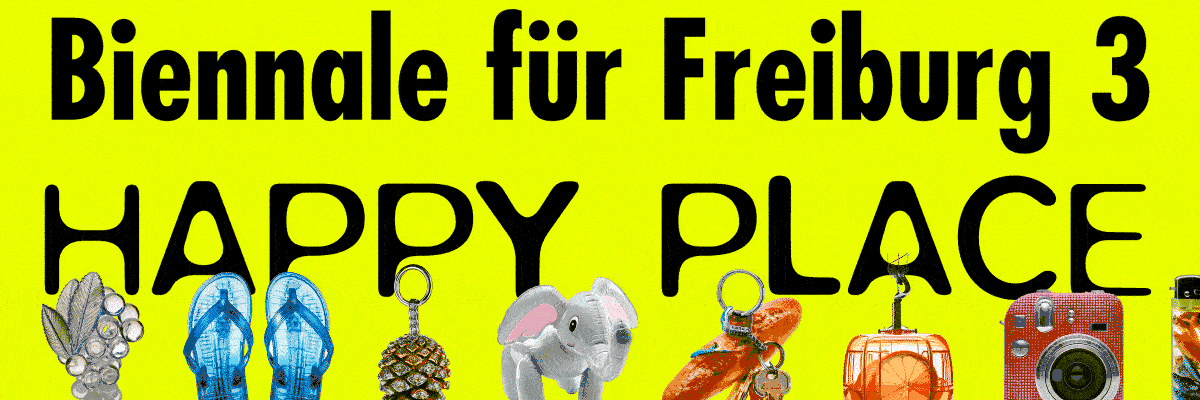
Samuel Ellinghoven, Yongkuk Ko, Brigita Noreikaitė
a resounding tinkle

Installation view a resounding tinkle, La Felce Cologne 2023, Samuel Ellinghoven, Zuhause ist da, wo nicht nur der Schlüssel passt, sondern auch das Herz sich wohl fühlt, 2023; our home is our castle, 2023, courtesy the artist, Photo: Dirk Rose
Advertisement

Samuel Ellinghoven, Zuhause ist da, wo nicht nur der Schlüssel passt, sondern auch das Herz sich wohl fühlt, 2023, courtesy the artist, Photo: Dirk Rose

Installation view a resounding tinkle, La Felce Cologne 2023, courtesy the artists, Photo: Dirk Rose

Installation view a resounding tinkle, La Felce Cologne 2023, Yongkuk Ko, sunday dawn, 2023 (left); wanderlust, 2023 (right), courtesy the artist, Photo: Dirk Rose

Installation view a resounding tinkle, La Felce Cologne 2023, Yongkuk Ko, sunday dawn, 2023, courtesy the artist, Photo: Dirk Rose

Installation view a resounding tinkle, La Felce Cologne 2023, Yongkuk Ko, sunday dawn, 2023, courtesy the artist, Photo: Dirk Rose

Installation view a resounding tinkle, La Felce Cologne 2023, Yongkuk Ko, wanderlust, 2023, courtesy the artist, Photo: Dirk Rose

Installation view a resounding tinkle, La Felce Cologne 2023, courtesy the artists, Photo: Dirk Rose

Installation view a resounding tinkle, La Felce Cologne 2023, Brigita Noreikaitė, only when not observing can the particle become a wave, 2023 (left); act spooky, 2023 (right), courtesy the artist, Photo: Dirk Rose
If you ask people to draw a house, this is what you usually get: A square as a structural body with a triangle as a roof, fitted here and there with windows or doors. From childhood onwards, it is a popular motif. A tree and some lawn mark the landscape outside, not to forget the sun in the corner. It is astonishing to see how quickly and with how few strokes something so charged with meaning can be created.
Etymologically, Haus (house) has its origins in the Old High German term hûs, meaning something that covers or envelops, and shares linguistic roots with the German word Haut (skin).(1) However, the house as an architectural shell only has a supposedly protective function. The home can function as a shelter, as a place for rest and peace, but it can also turn into a space of fear, through physical or psychological violence or just the gossip of the neighbours, which sounds like a whisper through the street.
Housing is a basic human need and represents the centre of life, influences us in our everyday actions, and can provide privacy, health and well-being. At the same time, it serves the purposes of self-expression and representation, from the inside as well as from the outside, and reflects the social status of the inhabitants. Today, building or buying a house, der "Traum vom Eigenheim" (the dream of home ownership) is a discontinued model, on the one hand it is not environmentally friendly and on the other hand it is financially difficult to realise and thus only guaranteed to a small exclusive group. Nevertheless, it still exists: the collective desire for “die eigenen vier Wände" (one's own four walls). The exhibition a resounding tinkle examines the private sphere as an individual cosmos of each individual – hidden behind walls, memories, traditions, bourgeois stereotypes, clichés.
Samuel Ellinghoven's preferred media are sculpture and installation. For the exhibition, he created a work for the shop window of La Felce that falls somewhere between painting and relief. In his practice, he repeatedly confronts traditions, bourgeois stereotypes and clichés. our home is our castle (2023) is what Ellinghoven himself calls a transformative modern-bourgeois kitschy wall painting that translates traditional Bavarian Lüftlmalerei into a contemporary form. He takes the familiar English proverb "My home is my castle", which describes the home as a place of protection, an impregnable castle, and mixes it with other kitsch moments. With their hands on their hips, two figures guard their fictitious home, surrounded by high defensive fences and an obligatory pet. The symmetrically designed motif is made of hot glue and frosted window film, which, sometimes lightly structured, sometimes patterned, denies us a view into the interior of the room - only specific glimpses through cut-out fragments are possible.
Ellinghoven's work Zuhause ist dort, wo nicht nur der Schlüssel passt, sondern auch das Herz sich wohl fühlt (2023) (Home is where not only the key fits, but also the heart feels at home) serves as an ironic response to the idea of the home as a fortified castle: For if not under the doormat or the flowerpot, the spare key can be found under the decorative stones and admission is granted at all times.
Yongkuk Ko's sculptures take up the form of window (frames), but do not provide a view to the outside. Instead, they function as showcases, containers for memories and longings. The miniatures he finds at the flea market or on Ebay are objects with a history that he collages into something new. Many of the figures come from the domestic sphere - a chair, a bench, a vase with flowers - which supports the impression of a separate microcosm. The doll-like cuteness meets elements that appear somewhat threatening or that transfigure the first impression, such as scratches, traces of fire on wood, or illusory shadows on glass. Miniatures themselves are also emblematic of the ambivalence inherent in Yongkuk Ko's works, as they always give the viewer the impression of control, but at the same time represent a life determined by unknown forces.
Brigita Noreikaitė's drawings demonstrate her interest in the enigmatic, the hidden and the subconscious. They show us spaces where reality and the dream world merge: A horse in a bedroom amidst numerous fragilely shaped vases, or a woman looking for a way out, while water seems to rise ominously in both rooms. The horse as a magical being appears again and again in fairy tales, myths or even surrealist paintings. It stands for mystery, for the untamed and directs the viewer's gaze to questions outside the "proverbial domestication of thought"(2). Symbols that refer to parallel worlds are also encountered by the viewer and support the surreal impression: an eternally long staircase leading to nowhere or an open window with no discernible view. C.G. Jung describes the house "as an extension of the soul"(3). The rooms in which we live are never only determined by their form or inventory, but are shaped by the individual experiences, memories, fears and traumas of their inhabitants. Brigita Noreikaitė's drawings reflect on these realms of our psyche.
1 – German Dictionary by Jacob and Wilhelm Grimm 1877, IV 2 , vol. 10, col. 641.
2 – Vgl. Hauenstein, Hanno: Göttliche Pferde, maskierte Hyänen und tänzelnde Hunde, in: Schirn Mag, 30.01.2020, URL: www.schirn.de/magazin/kontext/2020/fantastische_frauen/fantastische_frauen_surreale_tiere_mischmisch/ (accessed: 23.10.2023).
3 – Vgl. C.G. Jung quoted by Raap, Jürgen: Die Dritte Haut: Häuser, in: Kunstforum Bd. 182 - Die dritte Haut: Häuser I, URL: //www.kunstforum.de/artikel/die-dritte-haut-hauser/ (accessed: 24.10.2023).
Amelie Gappa




